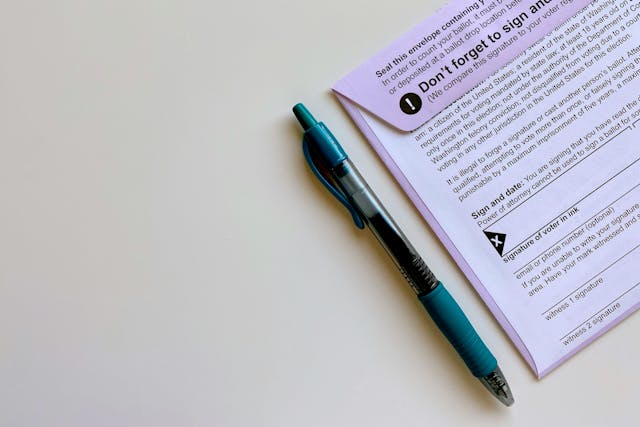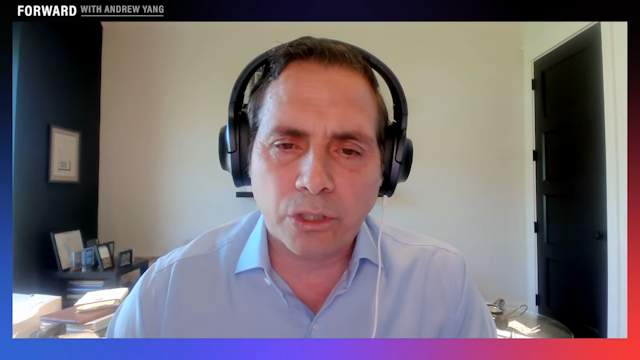Poll: Voters Must Choose between Two Choices They Don't Trust

Republicans say Trump is honest and Democrats say Clinton is honest, but among all voters, both candidates come up short. How can you become a general election front-runner if most voters don't trust you? --- former Maryland governor & Democratic presidential candidate Martin O'Malley
Martin O'Malley makes an incredible point, one that the voters in both parties really need to address and focus on as the primary season unfolds.
According to a new Quinnipiac University National Poll, the majority of voters do not trust the front-runners for the Republican and Democratic parties -- Donald Trump (58-33) and Hillary Clinton (57-37).
This is an outright horrible position for both parties to be in. The poll also showed that the single most important issue to voters was candidate trustworthiness in this election cycle, followed by how much a candidate cares about needs or problems and strong leadership.
The front-runners scored equally bad on caring about the needs and problems of average Americans -- Trump (63-31) and Clinton (52-45).
An unfortunate reality has developed where both parties are fielding front-runners who are perceived negatively in the two most important categories by the majority of voters, yielding negative net favorability ratings: Trump (27-59) and Clinton (40-51), both at their lowest individual levels.
Meanwhile...
Other candidates in both parties are surging.
Jeb Bush is now sitting on his highest favorability rating (43-41), even after bumbling several times in the early stages and being a primary target of Trump's political wrath.
Joe Biden (not formally declared, but exploring) is sitting on a seven-year high favorability rating (49-39), making his entrance into the race more likely.
Other candidates are also sitting at their highest favorability ratings: Bernie Sanders (32-25) and Scott Walker (36-27).
Each of these candidates, regardless of party, will need to capitalize on these surges, and try to take some of the spotlight and press time away from the front-runners to build a stronger base of appeal.
Both Parties need to Avoid Fundamental Mistakes
There seems to be nothing new under the sun when it comes to politics. If we go back far enough, we will always find a comparable scenario.
In this case, both parties are playing with fire by employing (either willingly or de facto) strategies that haven't worked out so well in the past.
While Sanders is struggling to make as much noise as possible, and arguably is getting phenomenal crowd appeal, it seems that too many Democrats are taking the attitude of this election being "Hillary's last shot at the White House."The Republicans had a similar attitude in 1996, when Bob Dole faced Clinton and was overwhelmingly stomped in the general election.
Party cronyism -- i.e. giving the party poster-child that one last shot -- is never a great way to campaign. And the fact remains that win or lose, this will likely be Hillary's last shot at the White House.
The Republicans are making the opposite mistake.
In 2012, Mitt Romney was chosen way too quickly as the Republican's only hope against Obama, a strategy that eventually blew up in their faces because the moderate Romney couldn't consolidate the base while winning the swing and independent vote.
This year, the Republicans are straying far from selecting a "chosen one" in the early stages, and seem quite content with a field of 17 candidates all trying to jockey for position.
This is problematic because pluralities create strange results, results that are usually fairly unpredictable.
Too Late for an Independent?
This election season is ripe for a true independent candidate, one that could capture the moderates of both parties, while taking the lion's share of the swing and independent vote.
Both parties seem willing to put up bad candidates, making this election a party-line election.
The amount of groundwork needed to launch an independent 50-state candidacy is overwhelming, and unfortunately it is unlikely that any independent candidate could muster enough organizational strength to do it in the short time left.This is unfortunate, because this election season is turning into a "members only" party vote, leaving out those who have left the parties altogether.
For 2016, many voters will probably be faced with the worst possible scenario -- they are probably going to have to choose who they are voting "against" as opposed to who they are voting "for."
A lesser-of-two-evils election is the lowest form of democracy. Voters deserve a better alternative.



